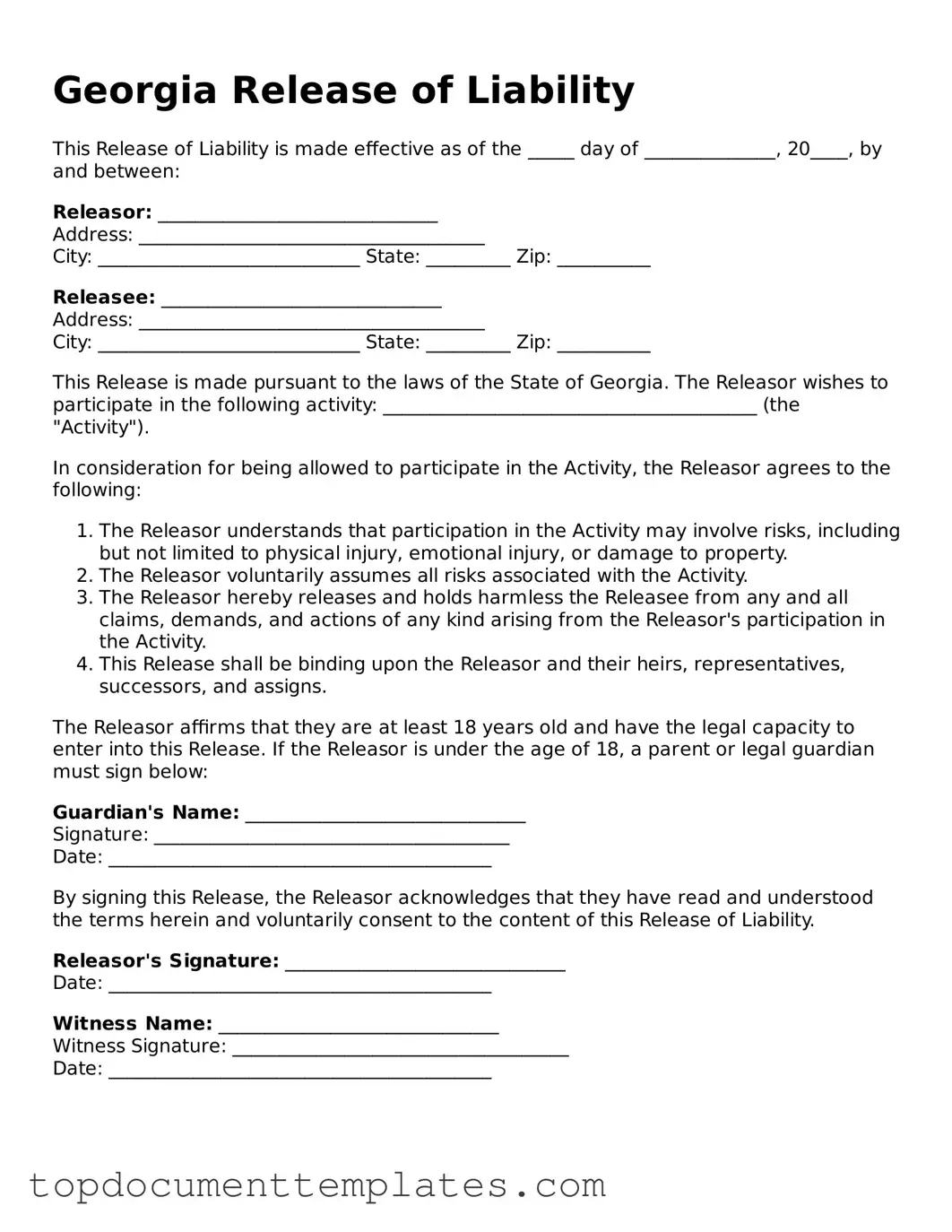Valid Release of Liability Form for Georgia State
The Georgia Release of Liability form is a legal document that protects individuals and organizations from being held responsible for injuries or damages that may occur during a specific activity. By signing this form, participants acknowledge the risks involved and agree not to hold the provider liable. Understanding this form is essential for anyone planning an event or activity that carries inherent risks.
Ready to take the next step? Fill out the form by clicking the button below.
Open This Form
